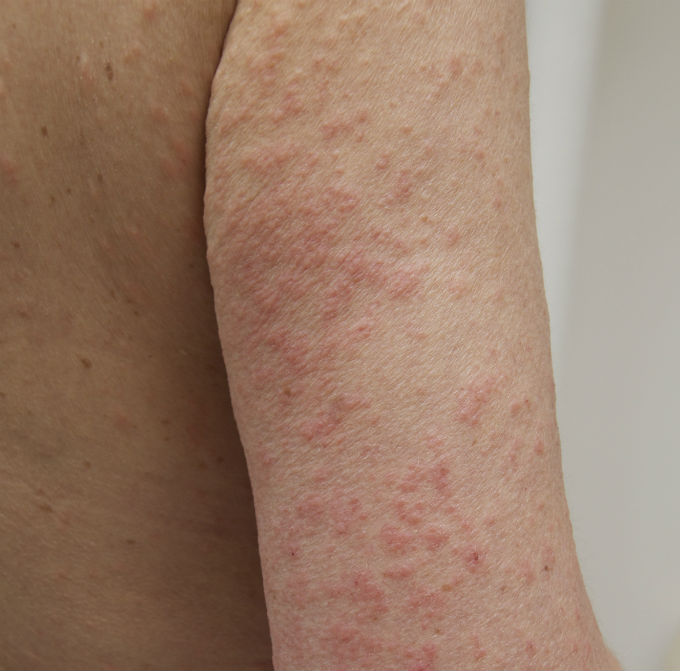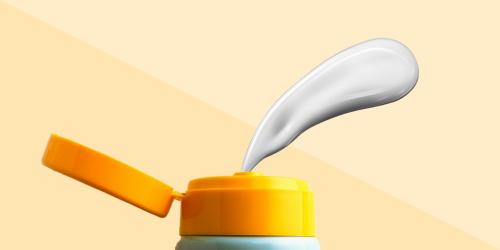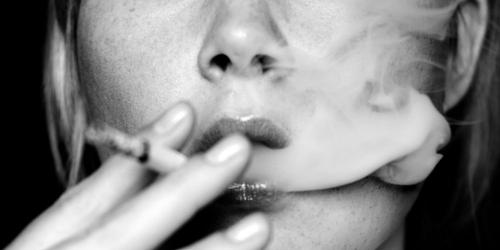Some small affections can literally ruin our vacation ... or even a simple afternoon spent on the terrace.
This is the case of lucite (or more precisely benign summer lucite - LEB ), a skin allergy related to the sun that appears in summer (spring-summer) during the first exhibitions.
This condition mainly affects women aged 15 to 35, regardless of their skin type, and, in rare cases, may affect men and children.
Very common, this pathology is however not serious and temporary , since it disappears after about ten days.
What are the causes of lucite?
Lucite is an idiopathic disease, that is to say we do not know its exact origin.
For many years, several hypotheses (hormonal causes, taking contraceptive pill or anxiolytics) have been issued by the medical profession, without establishing any formal causes.
However, it is known that prolonged exposures to UVA are the main cause of its onset : by penetrating the skin deeply, they disrupt its immune system and damage its cells.
Lucite: the symptoms
About 12 to 72 hours after exposure, inflammatory skin rashes (small, slightly pointed papules), severe itching and plaques appear.
The benign summer lucite settles on areas that are not exposed to the sun all year round: cleavage, shoulders, legs, arms, backs of the hands and feet .
In contrast, the face, an area permanently exposed and somehow "desensitized" to UV rays, is not affected.
 BSIP / Getty Images
BSIP / Getty Images
How to treat an allergy to the sun?
There are several ways to treat summer lucite:
- Preventive treatment
When you know that you are subject to lucite, it is better to prepare your outings to the sun and gradually adapt your skin to receive UV rays.
For that, it is useless to use a sunscreen with the very high protection index type SPF50 or more as some specialists recommended it a few years ago. From now on, dermatologists advise to favor a protection ratio SPF30 UVA / SPF30 UVB .
Lucite or not, we also adopt good gestures in the sun: we expose ourselves gradually the first days, we avoid the niche 12h-16h, we re-apply frequently its sunscreen (especially after bathing) and we adopt textile protection.
One month before the exposure (and throughout the holidays), you can take a course of food supplements rich in carotenoids (beta-carotene, lycopene), antioxidants, vitamins C, E, selenium and fish oils rich in omega -3. The goal ? Impregnate the epidermis with these supplements to increase the trigger point for lucite.
Another solution: a doctor may prescribe a treatment initially recommended to prevent malaria to take a week before exposure.
Finally one can opt for sessions of puvatherapy , a progressive irradiation with the UVA conjugated to a taking of photosensitizing drugs. This preventive method, practiced in a dermatology practice, can trigger desensitization to this type of UV. Often used as a last resort, it can only be performed once a year and takes place over 5 weeks, with 3 weekly sessions. Binding, it is also risky since excessive and too frequent exposure to UVA is a triggering factor for melanoma.
- Curative treatment
The first days after the push, it is better to protect yourself from the sun by staying in the shade or by covering your skin with clothes to avoid aggravating the inflammation.
In addition, you can apply local corticoids and take antihistamine to calm the itching.
After 5 to 10 days, the skin begins to tan and the lucite volatilises.
Lucite, an allergy for life?
Hopefully not.
After the outbreak of the first lucite, others will return for several years at each solar exposure, then, one day, it disappears without any real reason.
Other forms of lucite ...
The benign summer lucite is the most common form, but there are others, much rarer.
Among them, the polymorphic lucite , which is triggered at the onset of the beautiful days and reappears with each exposure to the sun.
Unlike LEB, it touches the face and can even reach areas of the body as it passes through clothing. Its symptoms are various and are never the same from one manifestation to another (bumps, red spots, itching, burns, blisters ...), hence the term "polymorph".




